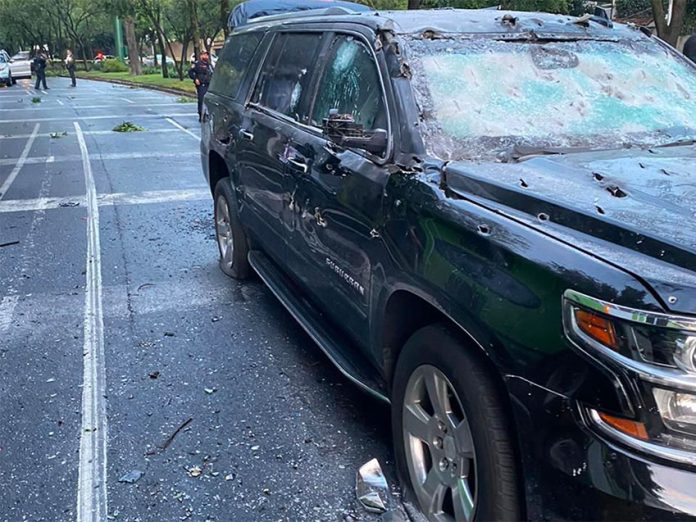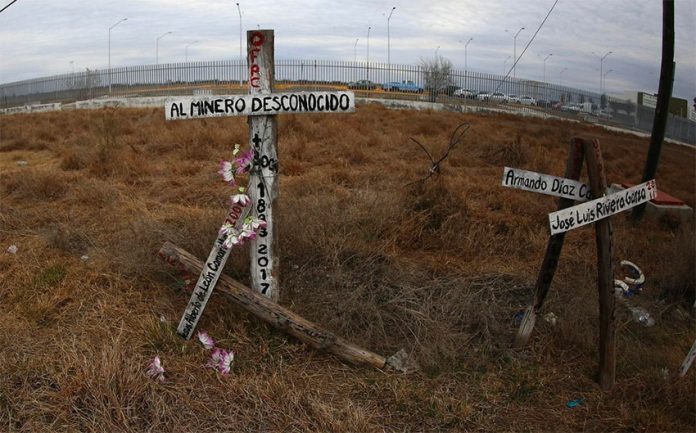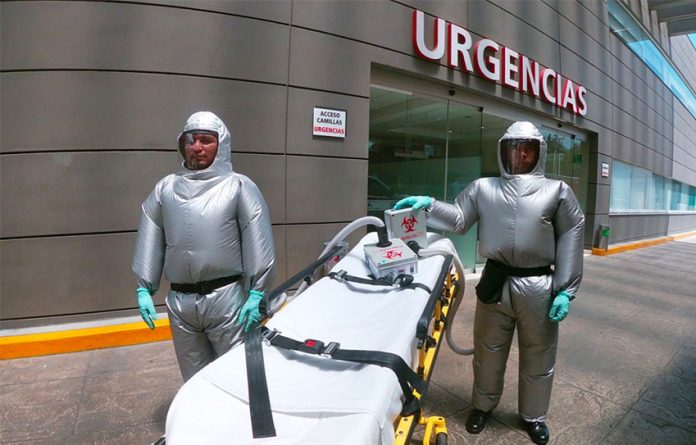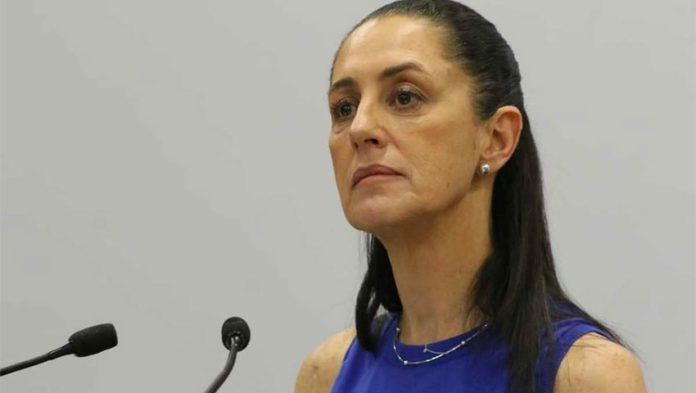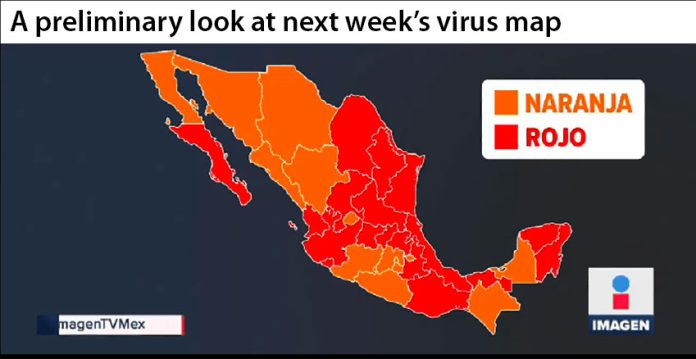As the coronavirus pandemic continues to grow, authorities in 24 states have made wearing a face mask mandatory in all public spaces.
Residents of Aguascalientes, Campeche, Coahuila, Chihuahua, Mexico City and Durango have been required to wear a mask outside their homes since April.
Authorities in Hidalgo, Jalisco, México state, Michoacán, Morelos, Nuevo León, Oaxaca, Puebla, Quintana Roo, Tabasco, Tamaulipas, Yucatán and Zacatecas have also mandated the obligatory use of masks in public spaces since April.
Guerrero Governor Héctor Astudillo followed suit on June 15, ordering citizens to wear masks in both public and private places, and four more states mandated the compulsory use of masks this month.
The State Committee for Health Safety in Guanajuato said on July 2 that residents must wear masks in all open and closed public spaces across the state’s 46 municipalities, while the Sonora government decreed their mandatory use on July 5.
The governors of Colima and San Luis Potosí this week joined a pact with their counterparts in nine other states that decrees the mandatory use of masks in all public spaces.
Authorities in three states – Nayarit, Querétaro, Veracruz – have ordered residents to wear masks on public transit but their use is not obligatory in other public spaces.
Meanwhile, authorities in Baja California, Baja California Sur, Chiapas, Sinaloa and Tlaxcala have not issued any orders to wear a mask.
Despite mandating the use of masks in public, Mexico’s coronavirus pandemic continues to grow, with more than 100,000 new cases reported so far this month.
The federal Health Ministry reported 7,257 new coronavirus cases on Friday – the second highest single-day tally since the start of the pandemic – increasing the total number of confirmed cases to 331,298.
Just under 9% of the confirmed cases – 29,363 – are considered active while there are also 85,877 suspected cases across the country, meaning that the results of that number of Covid-19 tests are not yet known.
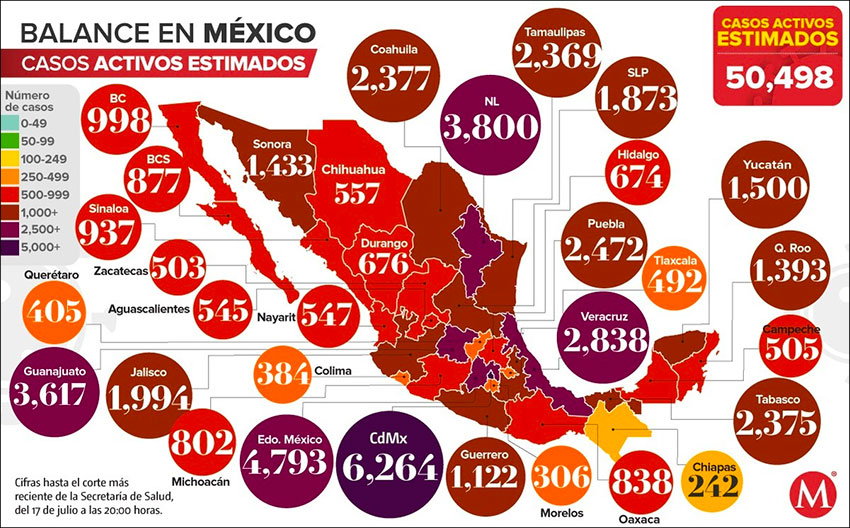
Based on past positivity rates, the Health Ministry estimates that Mexico’s accumulated case tally is 372,099 and that active cases total 50,498.
The Health Ministry also reported 736 additional Covid-19 fatalities on Friday, lifting Mexico’s death toll to 38,310.
National data presented at Friday night’s coronavirus press briefing showed that 46% of general care hospital beds set aside for coronavirus patients are currently occupied while 38% of those with ventilators are in use.
Tabasco has the lowest availability of general care beds, with 85% already in use, while Nuevo León has the highest occupancy rate for beds with ventilators, at 66%.
In Chiapas, where Friday night’s press conference was held, new coronavirus infections have been on the wane for four consecutive weeks, said Deputy Health Minister Hugo López-Gatell.
“At this time, none of the municipalities are trending upwards [in case numbers],” he said.
The southern state has recorded 5,379 confirmed cases since the beginning of the pandemic but just 242 are currently active. Chiapas has also recorded 806 Covid-19 deaths.
The Health Ministry published an updated coronavirus “stoplight” map – used to indicate the risk of infection in each of Mexico’s 32 states – on Friday, which had no changes from a draft version presented to governors on Thursday.
Nine states will switch from “orange light” high risk to “red light” maximum risk on Monday, joining nine states that are already red.
The 18 “red light” states as of July 20 will be Baja California Sur, Coahuila, Nuevo León, Tamaulipas, Zacatecas, San Luis Potosí, Jalisco, Nayarit, Colima, Querétaro, Guanajuato, Hidalgo, Puebla, Tabasco, Veracruz, Yucatán, Quintana Roo and Oaxaca.
The 14 “orange light” states will be Baja California, Sonora, Sinaloa, Chihuahua, Durango, Aguascalientes, Michoacán, Guerrero, México state, Mexico City, Morelos, Tlaxcala, Chiapas and Campeche.
López-Gatell ruled out any possibility that students will return to classes in August, adding “it could be in September” but stressing that no decision has yet been made.
Source: Reforma (sp), Expansión Política (sp), Milenio (sp), El Universal (sp)

